The Surrender in Reims
With the partial surrender of German forces to General Montgomery near Lüneburg, Admiral von Friedeburg was ordered by Dönitz to attempt to negotiate a similar agreement with the Americans. This would help achieve the German aim of surrendering in the west whilst being able to continue fighting in the east.
Eisenhower immediately cabled General Alexei Antonov (Soviet Army Chief of Staff) and informed him that, during the forthcoming negotiations, he intended to demand from the Germans an unconditional surrender on all fronts.
A Soviet delegation consisting of liaison officer, Major General Ivan Susloparov with his aide, Colonel Ivan Zenkovitch and interpreter Lt Cherniaeff were sent from Paris with authority to take part in the negotiations.
Their presence would indicate to the Soviets that nothing underhand was being done and preserve the appearance of Allied collegiality.
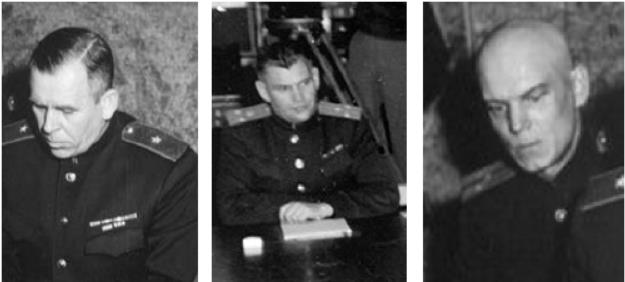
Major General Ivan Susloparov, his aide, Colonel Ivan Zenkovitch and interpreter Lt Cherniaeff
The day after the Lüneburg surrender, 5th May 1945, von Friedeburg (with Col Poleck) sought a meeting with General Eisenhower's staff at their Headquarters in a shabby school building in Reims. Unfortunately, bad weather prevented their aircraft from landing at Reims and they were diverted to Brussels and driven the 200km back to their destination.
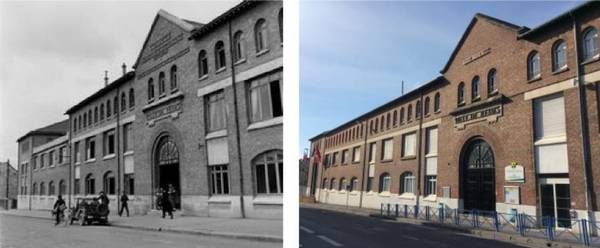
The Reims Technical College in 1945 and now (2015).
That night (somewhat jaded after their journey) von Friedeburg and Poleck met General Smith who was informed that the Germans were prepared to surrender all their forces on the Western Front. When this was relayed to Eisenhower he insisted on "immediate, simultaneous and unconditional surrender on all fronts."
Eisenhower also threatened to close the borders to those fleeing from the east if these demands were not met.
As von Friedeburg did not have the necessary authority to accept these conditions, a signal was sent to Dönitz via the British Second Army asking for authorisation.
As there would be some time before this signal could be delivered, the Germans were accommodated in No:3 Place Godinot, Reims.
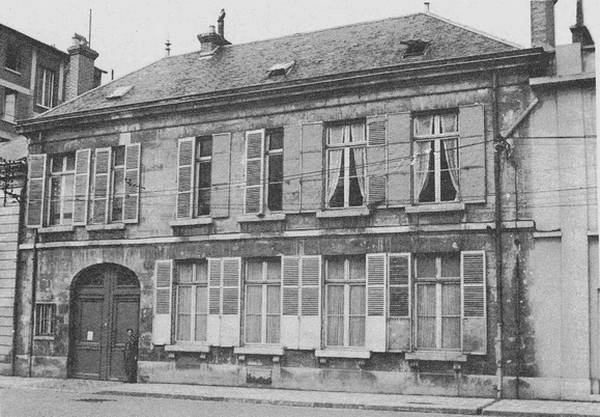
No:3 Place Godinot, Reims was normally used to accommodate officers visiting SHAEF.
On the 6th May 1945 the reply from Dönitz was received. It said that General Jodl (with his aide, Major Oxenius) would fly to Reims and join von Friedeburg. They arrived shortly after 18:00hrs and explained to General Smith that the surrender terms were unacceptable. However, a capitulation in the west only would be immediately accepted.
When General Smith informed Eisenhower that he felt the Germans were stalling for time, Eisenhower repeated his demand for total capitulation or all negotiations would be broken off.
Faced with this ultimatum, Jodl signalled Dönitz directly for authority to accept these conditions.
In the early hours of the 7th May 1945 Jodl received a message from Dönitz....."full power to sign in accordance with the conditions as given".

The main characters.....Eisenhower, Dönitz, Jodl, von Friedeburg and Susloparov
At 02:30hrs the ten main participants entered the "war room" with a large number of press and observers.
For reasons of protocol, Eisenhower was not at the signing but remained in a nearby room and was represented by Lieutenant General Walter Bedell Smith. An interpreter read out the terms of the surrender document before Jodl signed it at 02:41hrs on Monday, 7th May 1945.
In what was seen as a major concession, the capitulation would go into effect at 23:01hrs Central European Time on Tuesday the 8th May 1945.
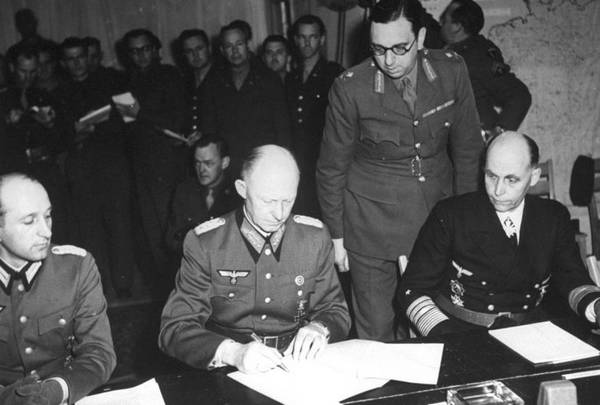
General Jodl signs the Instrument of Surrender flanked by Major Oxenius (aide to Jodl), and Admiral von Friedeburg
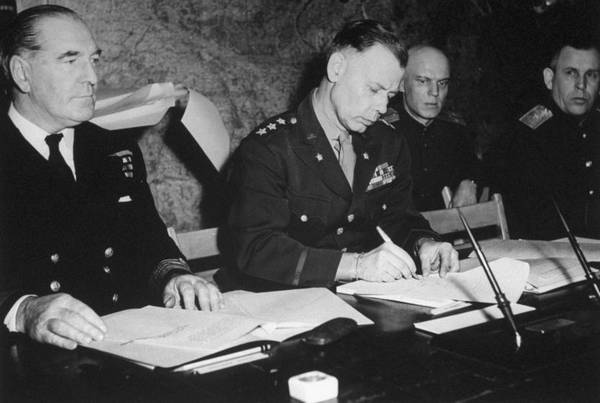
For Eisenhower, Lieut. General Bedell Smith signs the document. He is flanked by Admiral Sir Harold Burrough, Russian interpreter Lt Cherniaeff and Major General Ivan Susloparov.
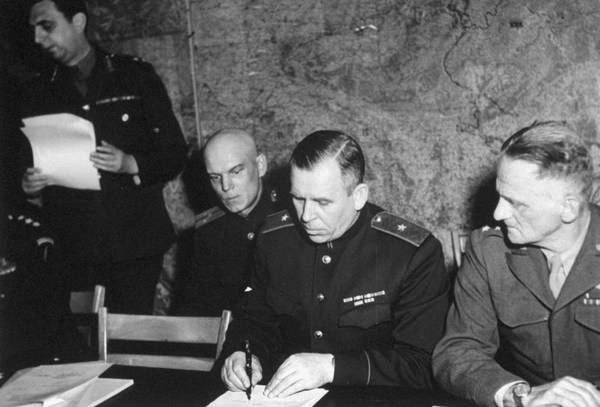
Major General Ivan Susloparov signs, with interpreter Lt Cherniaeff and General Carl Spaatz looking on.
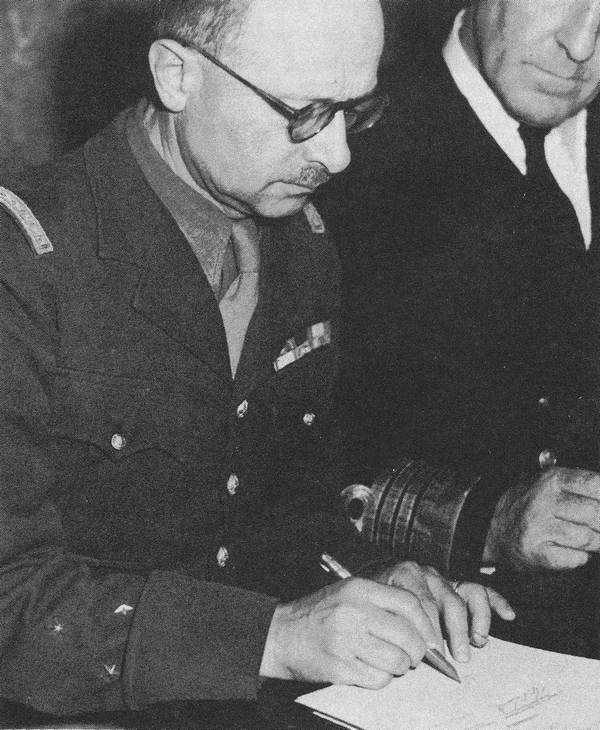
The final signatory was French General François Sevez in his capacity as deputy to General Alphonse Juin.
Jodl then addressed those in the room beginning in English:
“I want to say a word."
He then continued in German:
"With this signature the German people and the German armed forces are for better or worse delivered into the victor’s hands. In this war, which has lasted more than five years, they both have achieved and suffered more than perhaps any other people in the world. In this hour I can only express the hope that the victor will treat them with generosity.”
No-one translated his words or answered Jodl. There was no saluting and the Germans left the room. Those who remained in the ‘war room’ celebrated with champagne drunk out of mess tins.
The final act is described by journalist Relman Morin who was an eye witness to the events that day.
"Jodl was not a sympathetic figure. The harshness and iron of the Prussians was marked in every curve of his body and in every unyielding line of his face. Here was the personification of blood and iron. Men like this had loosed the rivers of blood and made the nights hideous with screaming. From the War Room, the Germans were taken down the hall to Gen. Eisenhower’s office.
Eisenhower was standing, waiting, behind his desk. Beside him was a lean, dark-haired man with a long face and a poet’s eyes, Air Chief Marshal Sir Arthur Tedder, Deputy Supreme Commander.
Jodl entered first, then von Friedeburg and finally Oxenius. Again there was a moment of heavy silence.
Then Eisenhower spoke. His voice was cold and stern. The steely character came into his blue eyes. In a few, clipped sentences, he asked the men before him if they understood the terms of the surrender. They said they did. He asked if they were prepared to carry out these terms. Another brief assent. They stood, unmoving, for an instant and then, sensing that nothing more would be said, they bowed stiffly, turned and left the room".
Eisenhower's desire for Germans to sign the total and unconditional surrender document in his HQ had been fulfilled and the prestige of the United States had been greatly enhanced.
The agreed time scale (02:41hrs 7/5/45 to 23:01hrs 8/5/45) would give the Germans a further forty five hours to transfer as many troops and refugees as possible from the east. This process, called Operation Hannibal, began in January 1945 and continued until the very last day of the war. Utilizing more than 1,000 naval and merchant ships, nearly 2,000,000 refugees would eventually be evacuated from the Baltic coast.
On the 8th May 1945, just before the Reims agreement came into force, a convoy consisting of at least sixty-five small vessels left Libau (a city in western Latvia) carrying over 15,000 soldiers and refugees. Three hundred of them, who had boarded the last of the small ships were captured by Soviet warships.
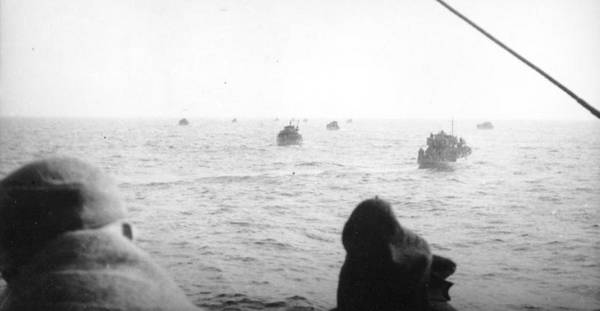
A flotilla of small boats, part of Operation Hannibal, rescued soldiers and civilians from the Baltic shore.
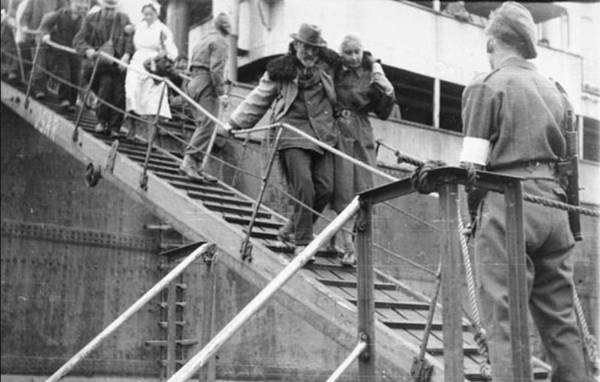
These last refugees from the east arrive in a port already under British control.
Both aboves images: Bundesarchiv
Although General Susloparov (the Soviet liaison officer) had the authority to take part in the negotiations, he did not have explicit permission from Stalin to sign the surrender documents. Therefore, at Eisenhower's request, he had sent the proposed text to Moscow and waited for the authorization to sign in the name of the USSR.
However, by the scheduled time, no reply had arrived from Moscow.
General Susloparov made the decision to sign but with the caveat that another document on capitulation could be signed if one of the Allied governments found it expedient. The representatives of the other Allied nations agreed.
In basic terms, the "price" of the German surrender in Reims was another ceremony (or ratification) under Soviet management in a location of their choice.